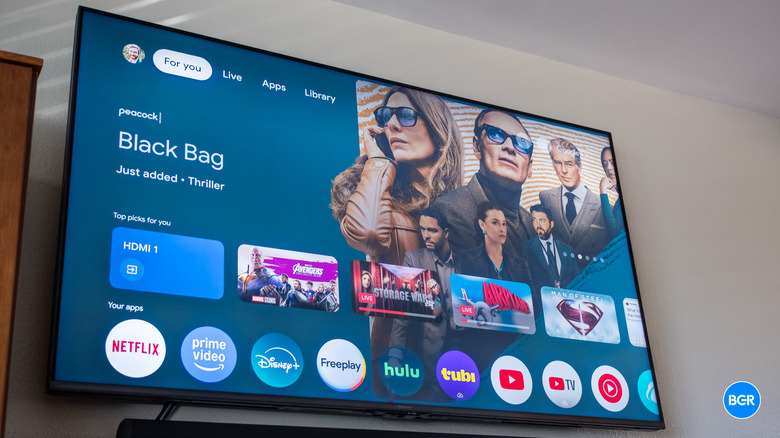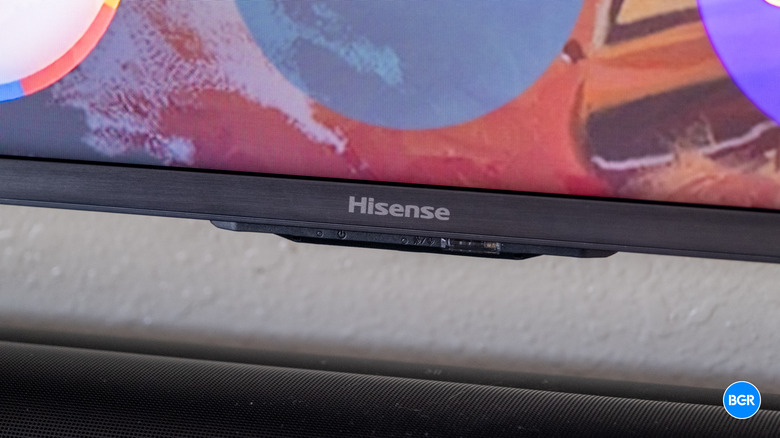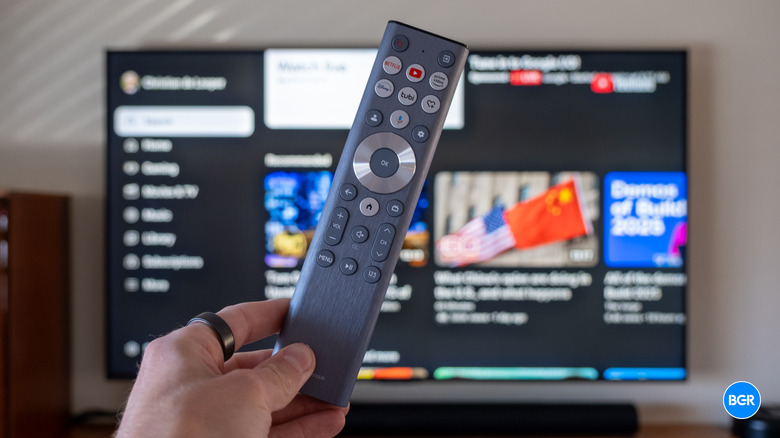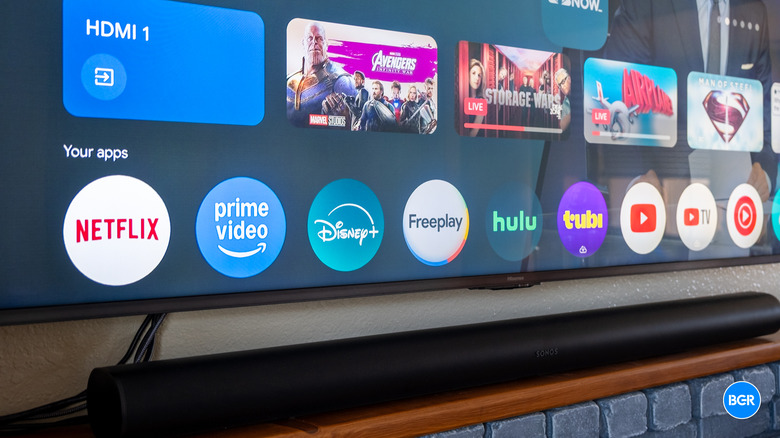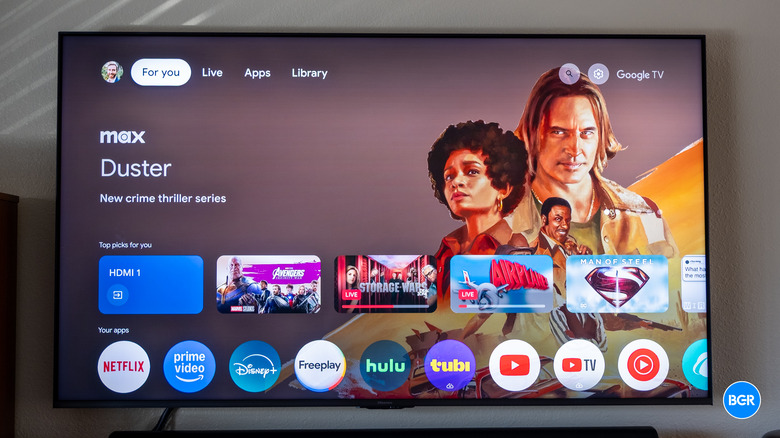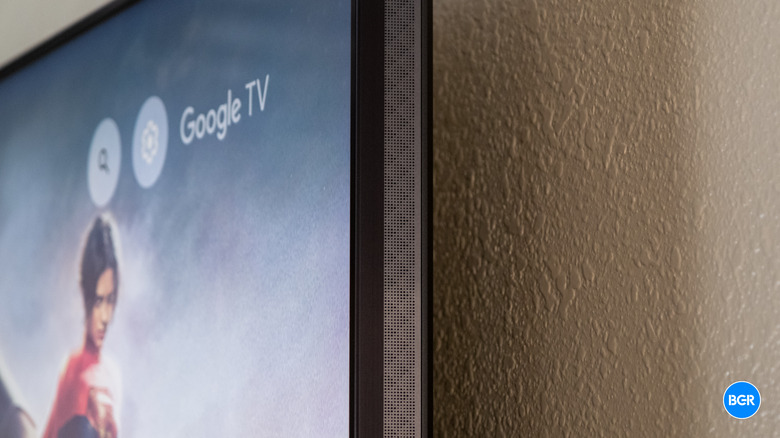Hisense U8QG Review: You Can't Do Better At This Price Point
- Stunningly bright
- Deep black levels
- Improved audio
- HDMI 2.1 on all ports
- Excellent color response
- Good value-for-money
- Audio still isn't amazing
- Only three HDMI ports
| Buy From | List Price | Sale Price | |
|---|---|---|---|
| Amazon | $1975 | $1398 | See It |
We may receive a commission on purchases made from links.
The Hisense U8 series has been the go-to for those looking for high quality at a reasonable price for a number of years now, and for good reason. Over the years, the U8 series has gotten brighter and brighter, while offering more helpful features and better backlight control. The Hisense U8QG continues that legacy, offering a brighter panel than before while keeping its mini-LED backlighting and adding a few new features.
But competition is seriously increasing in the mid-range TV space. TCL's similarly priced options have gotten a whole lot better too, and the likes of LG are now offering OLED TVs. At a similar price, does the Hisense U8QG do enough to hold its own?
Hisense U8QG specs
| Display size | 55, 65, 75, 85, 100 inches |
| Resolution | 3840 x 2160 |
| Display type | Mini-LED ULED |
| Refresh rate | 165Hz |
| Ports | 3 x HDMI 2.1, USB 3.0, USB 2.0, optical, ethernet, aux |
| HDR support | HLG, HDR10+, Dolby Vision |
| Software | Google TV |
| Price | $1,199.99 – $6,999.99 |
Hisense U8QG design
The overall design of the Hisense U8QG isn't all that different from the U8N from last year. That's not necessarily a bad thing, but the TV still doesn't look as premium as Samsung's thinner, though admittedly more expensive, OLED TVs — and to be fair, many LED TVs have to be thicker for cooling reasons anyway.
Like last year, the Hisense U8QG has a center stand instead of feet, and I quite like the look of it. That said, I mostly use the TV mounted on a wall, so its tabletop stand didn't really impact my usage.
It has relatively thin bezels around the screen, with a slightly thicker one at the bottom. The TV itself isn't all that thin — but this year, Hisense doesn't necessarily seem to be trying to make it look thinner than it is either. Instead, it's building speakers into the sides for a better built-in audio setup. We'll get into audio quality later, but regardless, as someone who has a Sonos system in my living room, I would have preferred a thinner build to better audio. Others may have a different view.
Remote
The remote that comes with the Hisense U8QG is very similar to previous generation models. In other words, it's fine, but looks and feels a little cheap. The remote has the same plastic build that's painted to look like brushed metal. It has all the buttons you'd need for software control, along with some quick access buttons for different streaming services like Netflix, Disney+, YouTube, and more. The remote is generally easy to navigate. If you're like me, you may not end up using it that much anyway.
Ports
In some ways, the port selection on the Hisense U8QG is better than before, but in others, it's a little less convenient. Instead of four HDMI ports, Hisense has stepped things down to only three, though this time around, they all support HDMI 2.1. With the third HDMI port being an eARC port, you may find yourself needing more than what the TV offers, which can be a little frustrating.
That said, there is another input that you might be able to make use of — a USB 3.0 port with support for DisplayPort 1.4. It's an interesting move, and some expect that eventually everything will move to USB, even in the case of TV inputs. That said, most people probably have HDMI cables set up for things like gaming consoles and streaming devices, so switching over to a USB-C input may not be all that convenient.
Hisense U8QG software and features
Like most recent U-series Hisense TV models, the Hisense U8QG comes with Google TV built in. Google TV has gotten a little better over the past year or so, and I found it easier than ever to get set up with a simple QR code.
The main Google TV interface hasn't changed much, but that's not a bad thing. It's reasonably easy to navigate, and offers both easy access to specific streaming apps, and easy access to content that you were recently watching. On this TV, I found it to be reasonably responsive too. It still didn't load as quickly as my Apple TV 4K, but it was quick enough, and most will be perfectly happy with that level of responsiveness.
I use an Apple TV, so I don't rely on Google TV on a daily basis — but I do like how easy it is to access the different settings. After all, you'll need to use these whether you use Google TV or another smart streaming ecosystem.
Speaking of the Apple ecosystem, the TV integrates decently well with it, too. It supports both HomeKit and AirPlay 2, which means that when HDMI CEC messes up when I'm switching between the Apple TV and the PlayStation 5, and I have the included remote hidden away, I can use my phone or ask Siri to switch back to the right input.
Hisense U8QG performance
The Hisense U8 series has been so loved because of its performance, and the Hisense U8QG continues that legacy. The new TV improves upon the previous generation in a few ways.
First, some things are the same. The TV still makes use of Mini-LED backlighting to deliver deep black levels and good contrast. But, for this generation, that backlighting is more precise and more controlled. The result? The U8N already didn't suffer from much blooming, but the U8QG has even less. Basically, in tests, I could cause some blooming, but it was minimal, and in day-to-day life, I never noticed it. That's as someone who tests TVs on a regular basis, and often notices issues like this when watching casually. The improved backlight control is basically thanks to the fact that while the TV still has Mini LED backlighting, it has more of those tiny LEDs, so it can turn them on and off a little more precisely.
It's especially impressive given the huge 5,000-nit peak brightness. Indeed, the TV got impressively bright, but what was most impressive was how highlights were handled when watching HDR content.
I also noticed that the TV was better at handling reflections and delivering a great picture off-axis. In my setup, the TV is mounted a little high, and reflects lights on the ceiling. I was still able to see those reflections, to be sure, but they were less intrusive than the U8N that was on the wall before.
Really, the Hisense U8QG isn't way better than the U8N in image quality, but it is better. That means that the best-looking TV in its price range looks even better than it did before. But what about those OLED TVs at a similar price? Yes, they're worth considering too, but the fact remains that they simply can't get anywhere near as bright as a Mini-LED model, so they're better suited to dimmer environments. My living room isn't really a dim environment, and it gets tons of natural light during the day.
Hisense U8QG audio
One of the big upgrades for this year comes in the form of a new speaker system, which is a 4.2.1-channel system with support for spatial audio formats like Dolby Atmos. It's an upgrade from the 2.1.2-channel speaker system that was available on the U8N from last year.
So does that actually translate to good audio? Well, it definitely translates to better audio. The fact is that it's near-impossible to fit great-sounding speakers into a modern TV simply because of...physics. But, I'm not sure companies like Hisense are trying to replace all external speaker systems — they're just trying to avoid the need for customers to need to buy a speaker system when they buy their TV. The speakers in the Hisense U8QG move towards doing so. In previous years, I've argued that even the cheapest soundbar you can find will sound better than a TV's built-in speakers, but with the U8QG, that's perhaps no longer true.
To be clear, if you have an extra $200 or so to spend on a soundbar, you'll get much better audio — but the ultra-cheap soundbars that cost next to nothing won't necessarily improve on the audio experience all that much. Again, though, if you're willing to spend a little more cash, you will still get better audio.
Conclusions
The Hisense U8QG takes a great TV and makes it even better. The Hisense U8 series retains its spot as the best-looking TV in this price range, for the majority of users. There are some who should go for a cheaper OLED TV, like those looking for something thin, and who plan on using it in darker environments, like rooms that don't get too much natural light. But anyone else will love the image quality, features, and perhaps even the audio on offer by the U8QG.
The competition
TCL is Hisense's biggest competition in this price range, and if you're looking for a 65-inch TV, then the TCL QM8G is the model you're likely considering. I haven't yet tested the TCL QM8G, so I can't say which model is truly better, but indeed, they'll both look excellent.
When compared to a cheaper OLED, the Hisense U8QG will come out on top for most day-to-day viewing. It gets much brighter, and that means that it'll make for a better viewing experience in most settings. That said, if your living room doesn't get much natural light and you like the idea of a thinner TV, something like the LG B5 might be worth considering.
Should I buy the Hisense U8QG?
Yes. It's a stunning TV at an excellent price.
